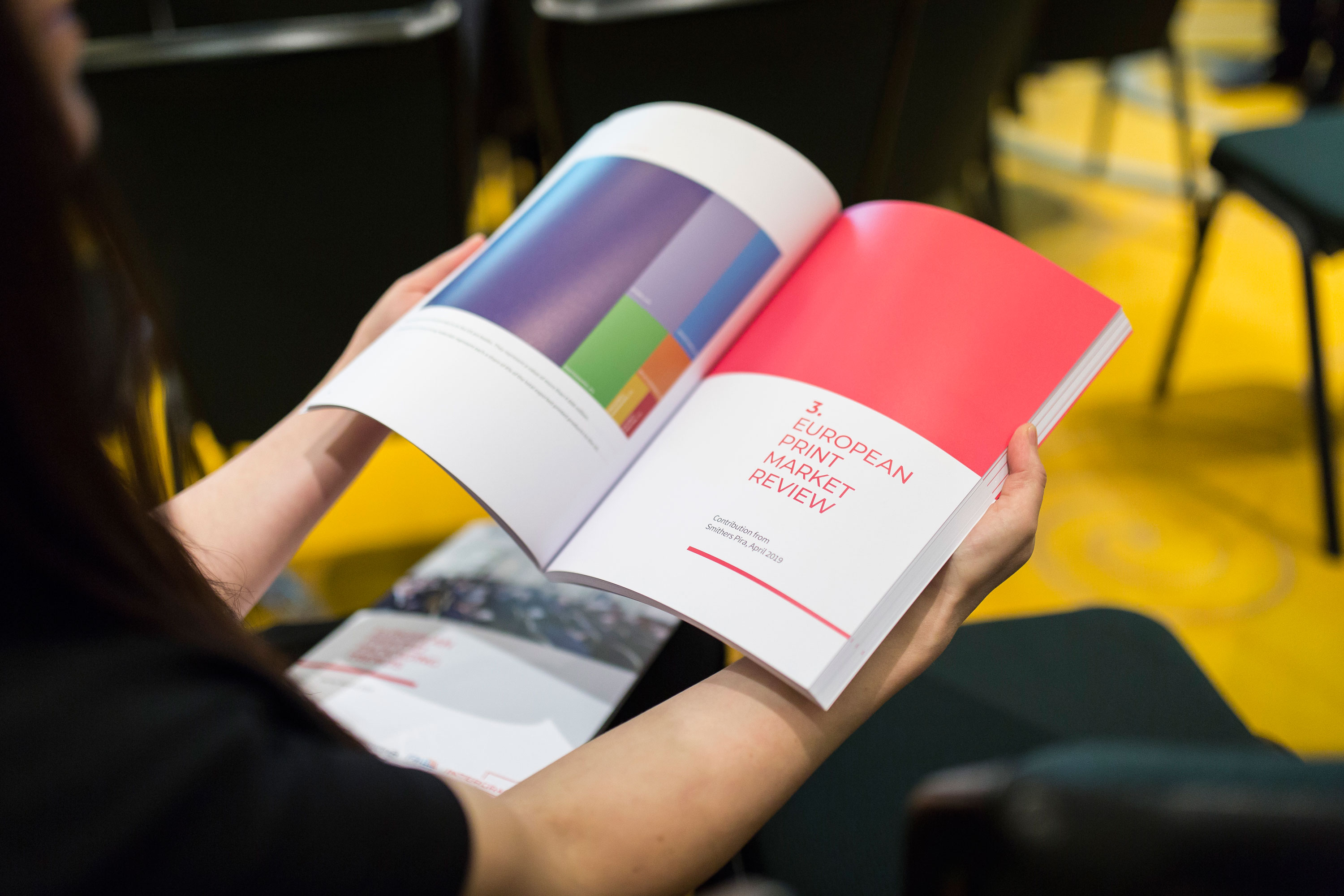READING PRINTED MATERIALS RESULTS IN BETTER LITERACY OUTCOMES
6 May 2021
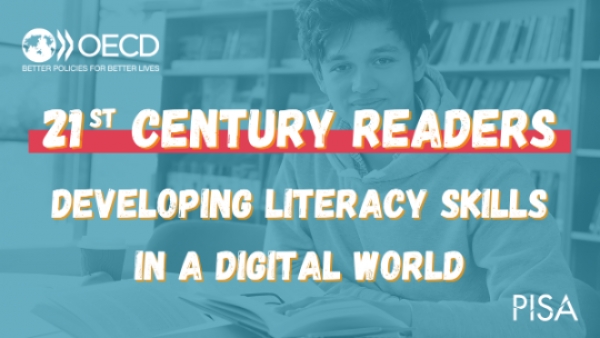
Students who read printed books more frequently perform better in reading, spend more time reading, and enjoy reading more than students who read more from digital devices. Reading digital texts more frequently even shows a “negative association with reading performance”. These are among the headline findings of a new OECD/PISA report: 21st Century Readers: Developing Literacy Skills in a Digital World.
In a compelling report published this week, PISA, the OECD’s Programme for International Student Assessment, affirms that students perform better when they read from printed materials rather than digital devices. This research sends a clear signal to parents and education providers that more should be done to safeguard reading in print for the future of education because it may play a role in better literacy outcomes.
Overall, approximately one-third of students rarely or never read books, according to the OECD/PISA report. Whereas one-third read books more often in paper format, 15% read more often on digital devices, and 13% read equally often in paper and digital formats.
These figures are alarming. While it is positive that printed books remain the preferred medium for reading, this research indicates that two-thirds of students may not be reading enough – or enough in print – to obtain the best chance of developing strong literacy skills. This could have far-reaching ramifications. Developing strong literacy skills is crucial in our knowledge-saturated digital societies. Young people must be given the best proven tools to navigate digital environments autonomously and cut through the noise of ‘fake news’ and disinformation.
The OECD is not the first to publish such findings. Intergraf has long promoted the results of the COST Action E-READ initiative, a large-scale research including meta-study, which found in 2018 that reading printed materials is better for young people’s education outcomes when it comes to comprehension, concentration, critical thinking, and deep-reading.
It is now well established that reading printed materials correlates with the highest development of the necessary literacy skills to thrive in our digital world. We urge education professionals across Europe to heed the findings of this OECD/PISA report (and other research) by actively promoting printed reading materials in schools. You can find more of our recommendations in this position paper on digital education.
We also urge researchers to build on PISA's findings and to dig deeper into this topic. More research is needed to determine the full extent of the causality between reading in printed and digital formats. Two explanations are currently possible: (1) reading books on digital devices is detrimental to reading performance; or (2) low performers tend to read books in digital format. In reality, it could also be a mixture of both.
Download the full OECD/PISA report here. Some of the most relevant findings are summarised below.
Print is better when reading for enjoyment
The OECD/PISA report confirms that there is a “clear relationship between reading print books and enjoyment regardless of whether students read equally often on paper and on digital devices or more often on paper”.
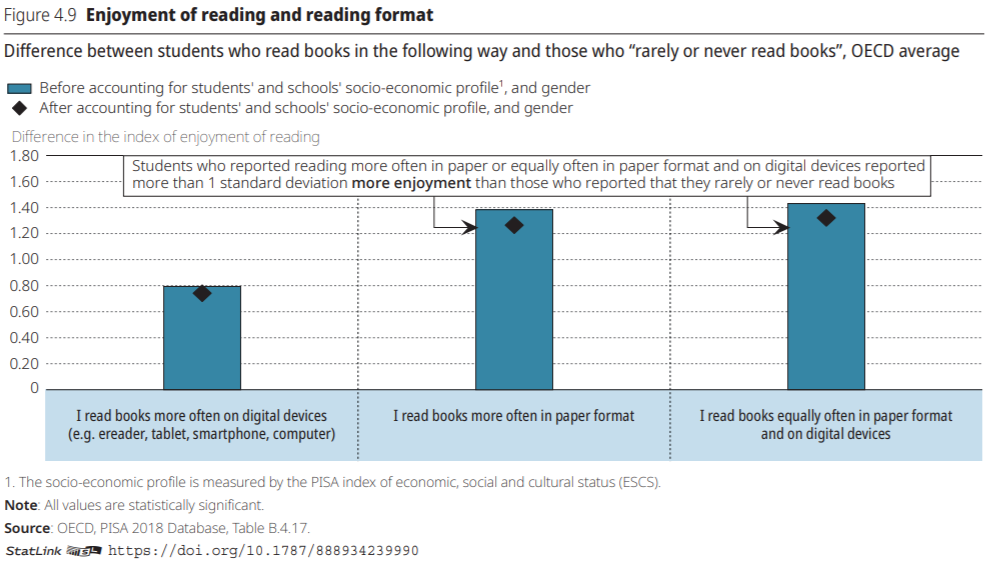
Students who read printed materials perform better
In all participating countries, “students who reported reading books more often in paper than digital format perform better in reading and spend more time reading for enjoyment”. The report goes on to explain that “education systems in which a higher percentage of students read books more often on paper perform better in reading than education systems in which students read books more often using digital devices”.
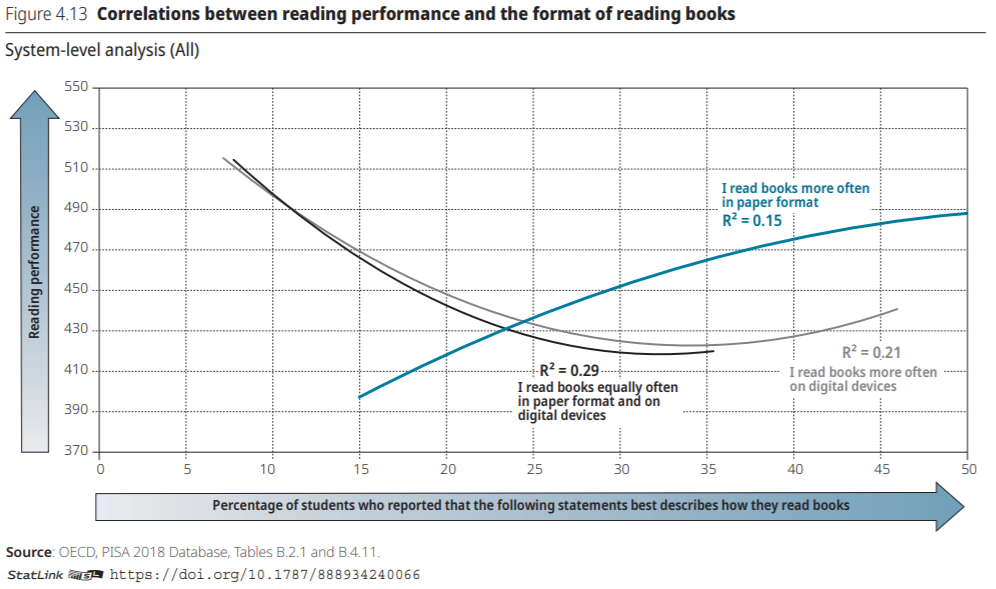
Students read for longer in print
The report clarifies that “students who reported reading books more often on digital devices read about 3 hours more a week than those who reported that they rarely or never read books, while students who reported reading books more often in paper format read about 4 hours more a week on average across OECD countries. Most importantly, students who reported reading books equally often in paper format and on digital devices read about 5 hours or more a week than those who reported that they rarely or never read books, after accounting for students and schools socio-economic background and gender”.
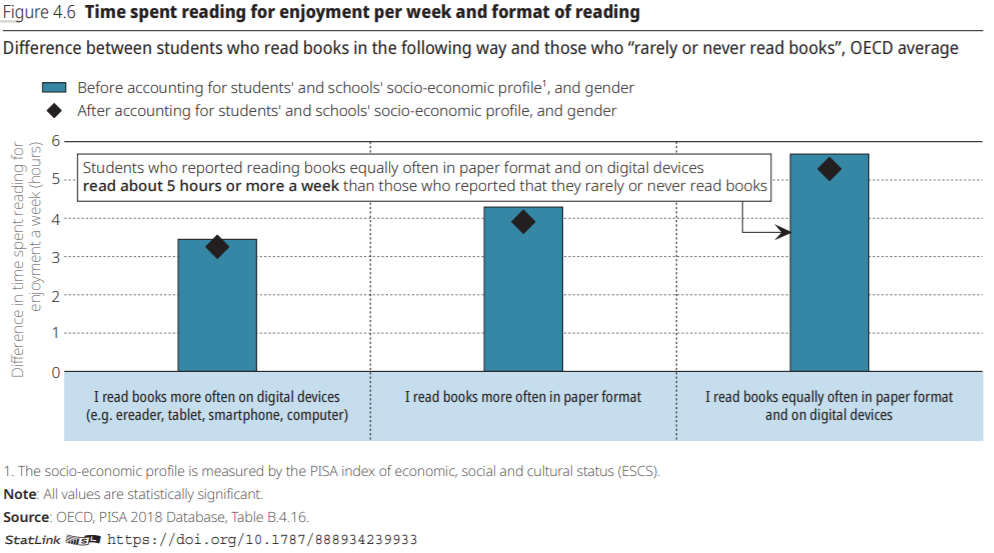
Reading digital texts is potentially detrimental to reading performance
Reading digital texts more frequently than printed texts actually shows a “negative association with reading performance after accounting for students’ and schools’ socio-economic profiles”.
The report asserts that “the time teachers spent using digital devices in teaching and learning activities is often negatively associated with reading performance. Few have managed to integrate digital devices in teaching and learning activities effectively, and they are the exception rather than the rule”.
According to the report, digital technologies can "amplify" learning, but "providing access and promoting the use of digital tools does not automatically lead to better results".
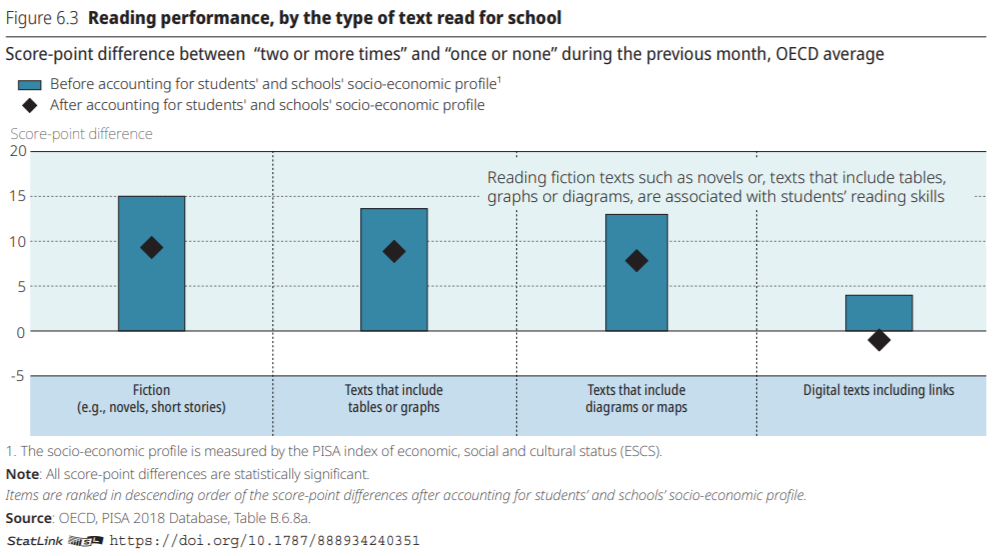
– ENDS –
Download the full press release here.
{K2Splitter}



